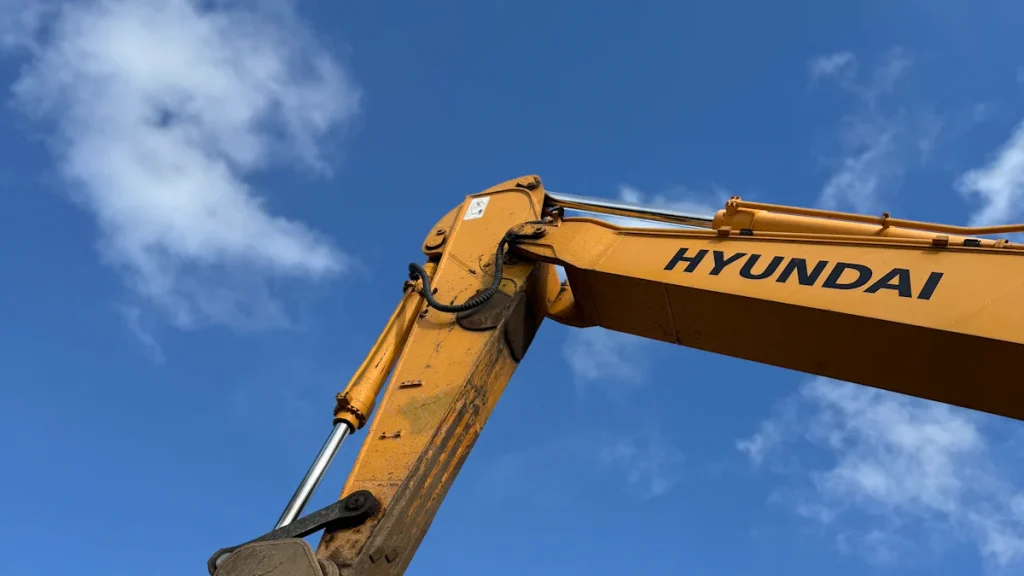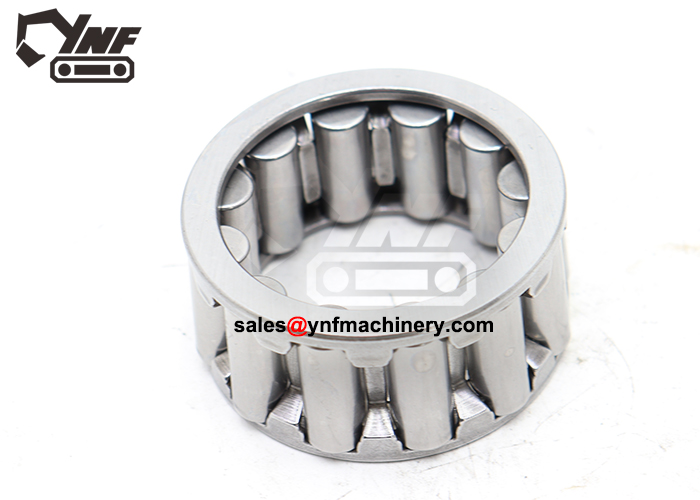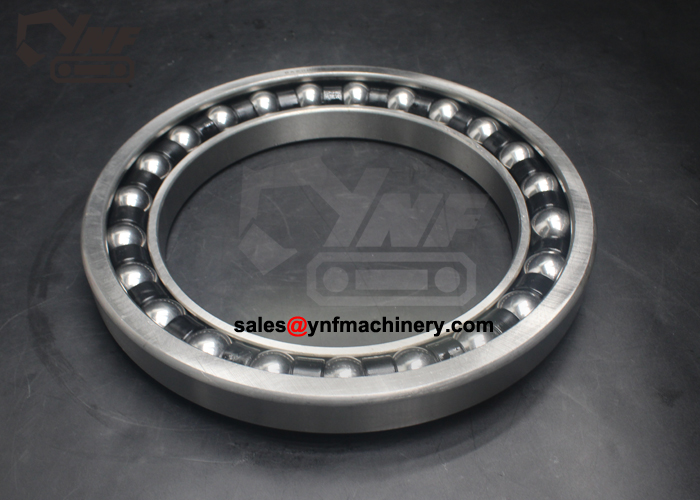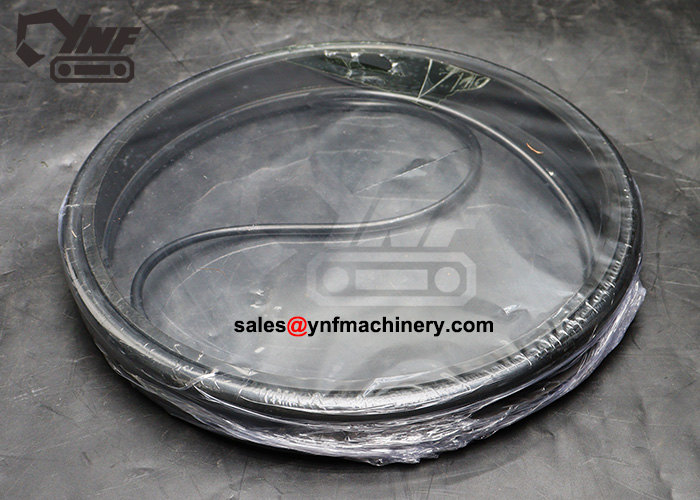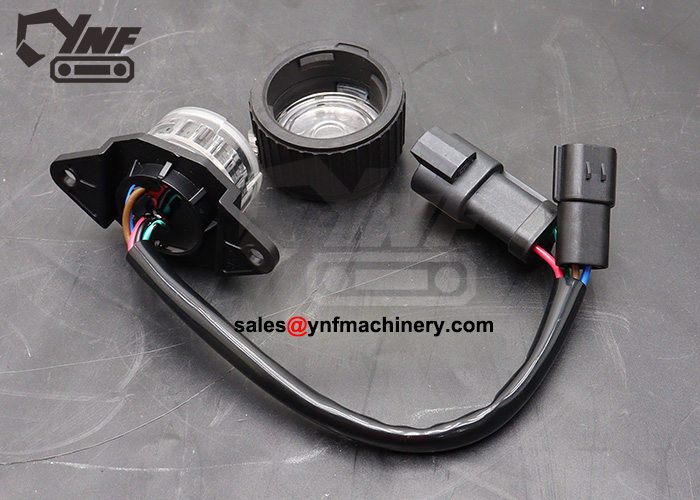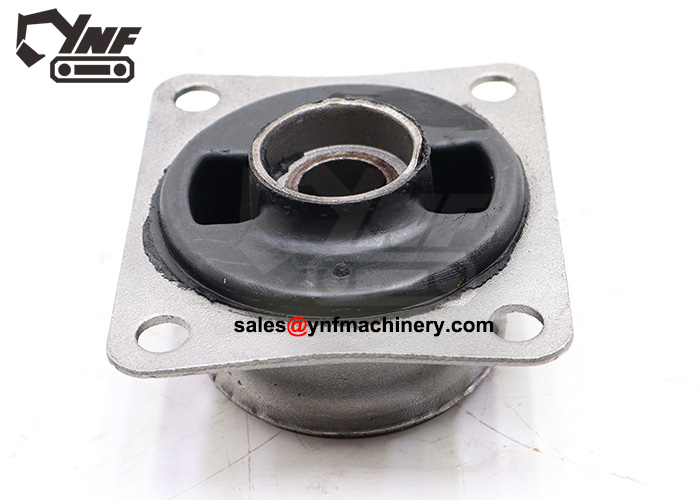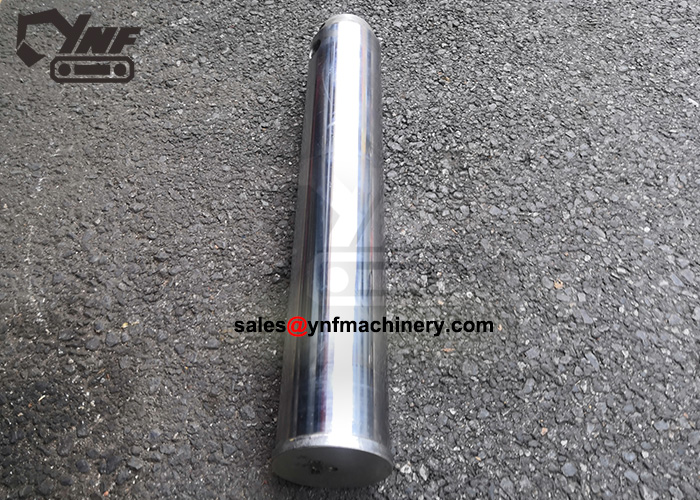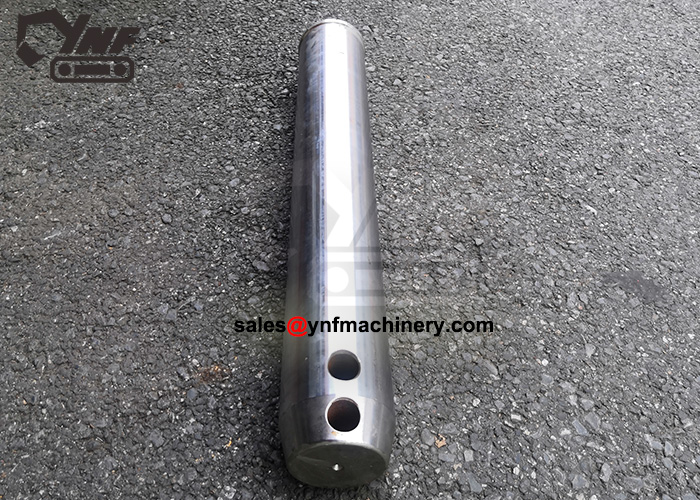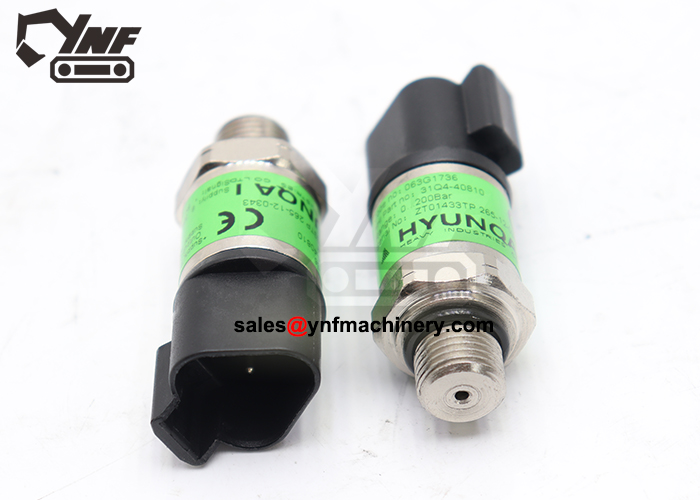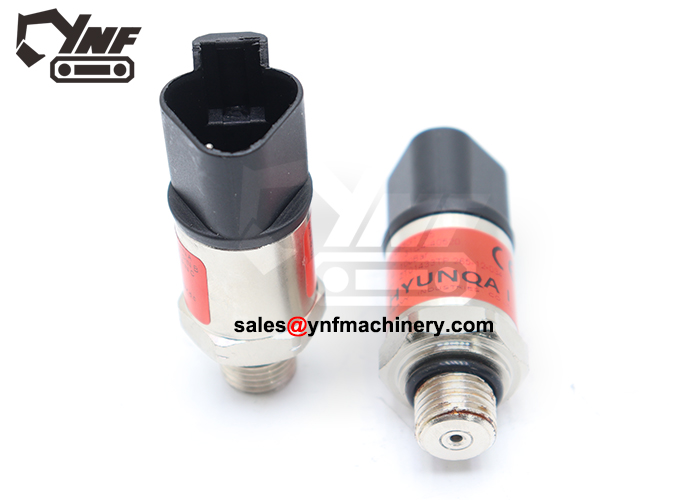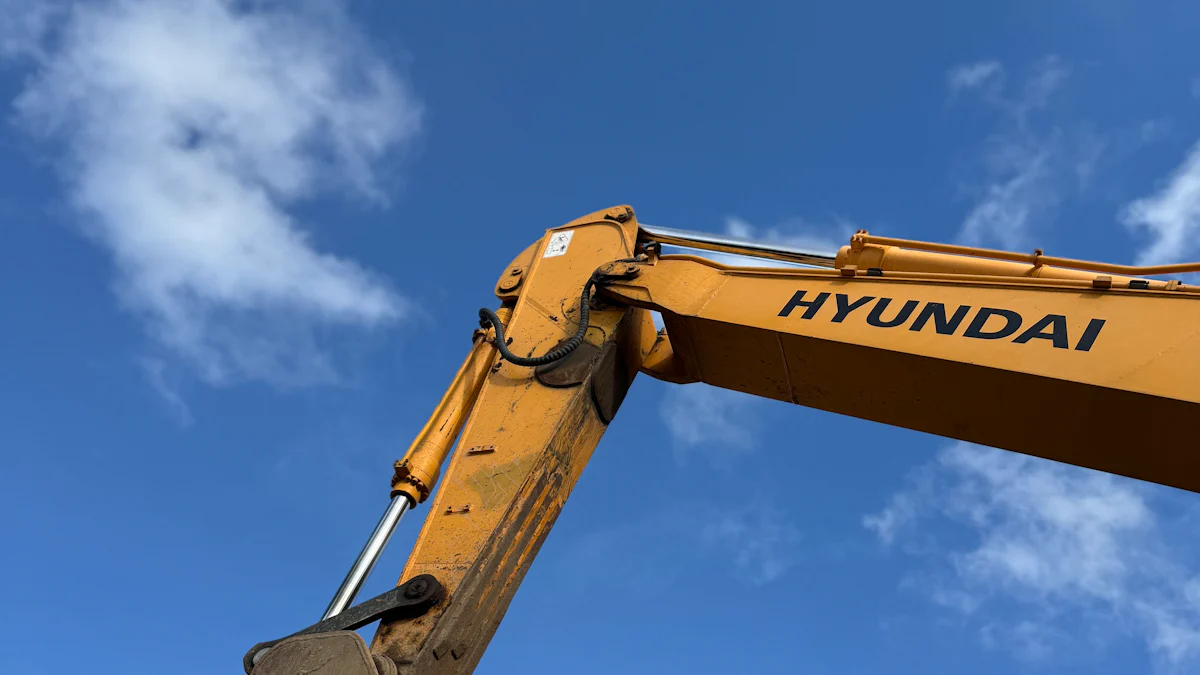
A Hyundai excavator parts diagram serves as a powerful tool for maintaining your equipment. It provides a clear visual reference, helping you identify components and pinpoint issues quickly. With this diagram, you can streamline repairs and reduce the risk of errors. By understanding how each part fits together, you ensure your excavator operates efficiently. Whether you’re replacing a worn-out part or diagnosing a problem, this diagram simplifies the process and saves valuable time.
Key Takeaways
Hyundai excavator parts diagrams show clear pictures of parts. This helps find problems and fix them faster.
Using the right diagram for your model is important. It stops mistakes and saves money during repairs.
Checking parts often with diagrams shows wear and tear early. This avoids sudden breakdowns and makes your excavator last longer.
Matching part numbers with the manual helps get the right parts. This saves time and avoids ordering wrong items.
Using diagrams with good parts from trusted sellers like YNF Machinery makes repairs easier and keeps your excavator working well.
Understanding Hyundai Excavator Parts Diagrams
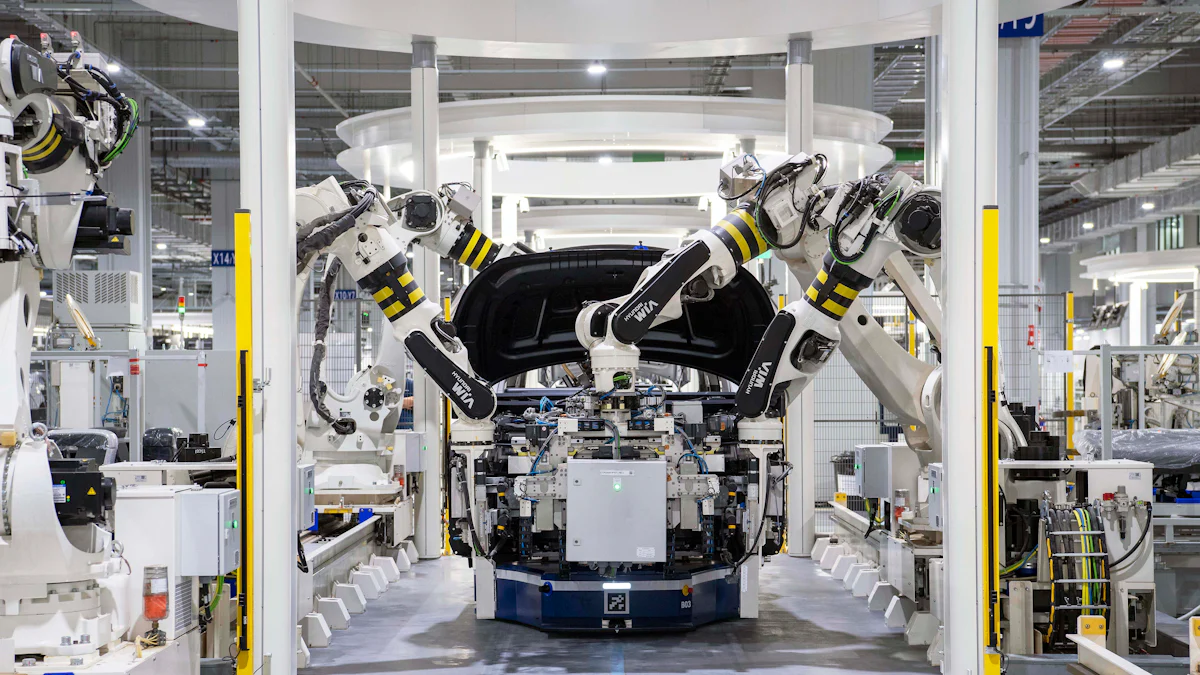
What Are Hyundai Excavator Parts Diagrams?
A Hyundai excavator parts diagram is a detailed visual representation of the components that make up your excavator. These diagrams break down the machine into individual parts, showing how they fit and function together. You can use them to identify specific components, understand their roles, and locate them within the equipment. Commonly illustrated parts include alternators, hydraulic pumps, excavator booms, and undercarriage rollers. Other key components like diesel engines, swing motors, and seal kits are also highlighted. By using these diagrams, you gain a clear understanding of your excavator’s structure, making maintenance and repairs more manageable.
Types of Diagrams
Exploded View Diagrams
Exploded view diagrams provide a comprehensive look at how each part connects to the others. They display components as if they were “exploded” outward, making it easier for you to see their arrangement. For example, you can examine how the hydraulic cylinders interact with the excavator’s boom or how the pins and bushings fit into the assembly. This type of diagram is especially helpful when disassembling or reassembling parts.
Component-Specific Diagrams
Component-specific diagrams focus on individual systems or parts, such as the engine or hydraulic pump. These diagrams allow you to dive deeper into a specific area of the excavator. For instance, if you’re troubleshooting an issue with the swing motor, a component-specific diagram will show you its internal structure and connections. This targeted approach simplifies diagnostics and repairs.
Where to Access Hyundai Excavator Parts Diagrams
Manufacturer’s Manuals
The service manual provided by Hyundai is one of the most reliable sources for accessing parts diagrams. These manuals include detailed illustrations and a comprehensive parts list, helping you identify and locate components with ease. They also offer step-by-step instructions for maintenance and repairs, making them an essential resource for any excavator owner.
Online Resources and YNF Machinery’s Support
Online platforms like ConEquip offer access to Hyundai excavator parts diagrams for various models. Additionally, YNF Machinery provides exceptional support for sourcing diagrams and high-quality excavator parts. Their expertise ensures you find the right diagram and components for your specific needs. With these resources, you can maintain your equipment efficiently and minimize downtime.
Benefits of Using Hyundai Excavator Parts Diagrams
Accurate Identification of Parts
A Hyundai excavator parts diagram simplifies the process of identifying components. It provides a detailed overview of all parts, making it easier for you to locate specific ones. Each section is clearly labeled, serving as a reliable reference point. This clarity reduces the chances of ordering the wrong replacement parts, saving you time and effort. For those new to excavator maintenance, these diagrams act as an excellent training resource. They enhance your understanding of the machine’s structure and help you describe parts accurately based on their location. This precision accelerates delivery times and minimizes errors during repairs.
Streamlined Repairs with YNF Machinery’s Excavator Engine Parts
Using an excavator parts diagram ensures faster and more efficient repairs. The diagram offers a visual guide to pinpoint the exact parts you need. This reduces misunderstandings when ordering replacement parts, allowing you to complete repairs without unnecessary delays. YNF Machinery’s excavator engine parts complement this process perfectly. Their high-quality components, such as pistons, crankshafts, and gaskets, are designed for durability and compatibility. By combining the diagram with YNF Machinery’s reliable parts, you can restore your excavator’s performance quickly and effectively. This approach minimizes downtime and keeps your operations running smoothly.
Enhanced Maintenance with Hydraulic Cylinder Seal Kits
Excavator parts diagrams also play a crucial role in maintaining hydraulic systems. These diagrams help you track wear and tear on components like hydraulic cylinders. With this information, you can identify when to replace seals or other parts. YNF Machinery’s hydraulic cylinder seal kits provide a dependable solution for preventing oil leaks and ensuring smooth operation. These kits are crafted from high-grade materials, offering durability and precision. By using the diagram to locate and replace worn seals, you can extend the lifespan of your excavator and maintain its efficiency. Regular maintenance with the right tools and parts reduces costly breakdowns and enhances overall performance.
Cost and Time Savings
Using a Hyundai excavator parts diagram can save you both time and money during maintenance and repairs. These diagrams provide a clear visual guide, helping you identify the exact part you need without unnecessary guesswork. This accuracy reduces the risk of ordering incorrect components, which can lead to delays and additional costs. By referencing the diagram, you can streamline the repair process and minimize downtime for your excavator.
When you rely on a factory service manual or other Hyundai manuals, you gain access to detailed instructions and diagrams. These resources allow you to perform repairs efficiently, even if you lack extensive mechanical experience. For example, the manual might include step-by-step guidance for replacing a hydraulic pump or troubleshooting engine issues. This level of detail ensures you can complete tasks quickly and correctly, avoiding costly mistakes.
Sourcing high-quality excavator parts from trusted suppliers like YNF Machinery further enhances your savings. Their durable components reduce the need for frequent replacements, lowering your long-term maintenance expenses. Additionally, the diagrams help you cross-reference part numbers with the manual, ensuring compatibility and preventing wasted purchases.
By using these tools, you can also avoid hiring external technicians for minor repairs. This independence not only saves money but also gives you greater control over your equipment’s upkeep. Whether you’re working on a large construction project or managing a rental fleet, these savings add up over time, improving your bottom line.
Incorporating a Hyundai excavator parts diagram into your maintenance routine simplifies the process and ensures cost-effective operations. With the right resources, such as a service manual and reliable parts, you can keep your excavator running smoothly without breaking the bank.
Step-by-Step Guide to Using Hyundai Excavator Parts Diagrams
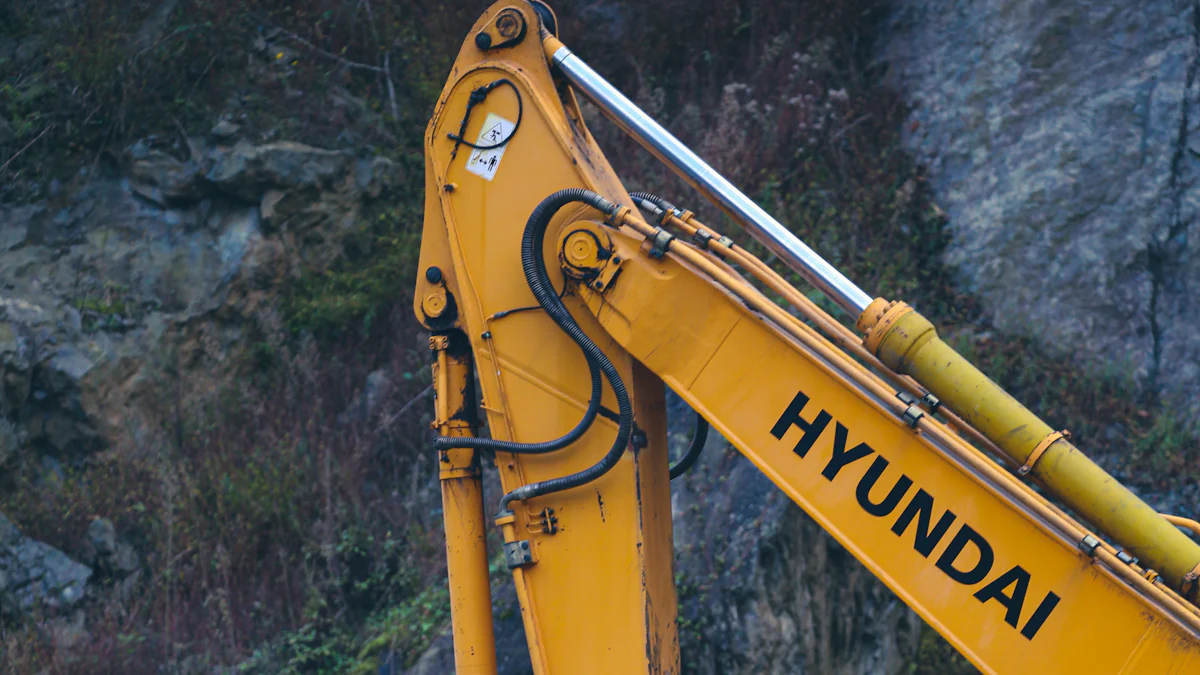
Step 1: Locate the Correct Diagram for Your Model
Finding the right diagram for your Hyundai excavator model is the first step. Each model has unique specifications, so using the correct diagram ensures accuracy. Start by referring to the factory service manual or other Hyundai manuals. These resources often include a dedicated section for parts diagrams. To simplify the process, follow this table for guidance:
Section Number | Description |
|---|---|
2-1 | Location of serial No. |
2-2 | Name of each part |
2-3 | Dimensions and specification |
2-4 | Weight list |
2-5 | Oil and grease supply points |
2-6 | List of supply oil and grease |
2-7 | When to repair |
2-8 | Hydraulic circuit diagram |
Use the serial number of your excavator to match it with the correct diagram. This ensures you access the most relevant information for your machine.
Step 2: Identify the Problematic Component
Once you have the correct excavator parts diagram, focus on identifying the faulty component. Carefully examine the diagram to locate the area where the issue occurs. Pay attention to the connections and relationships between parts. However, challenges can arise during this step. You might encounter the following:
Bias or assumptions can lead to overlooking real causes.
Complexity and clutter can obscure relationships between causes.
Lack of clarity in defining the problem can result in confusion.
To overcome these challenges, take your time and analyze the diagram thoroughly. Cross-check the visual representation with the symptoms your excavator exhibits. This method helps you pinpoint the exact component causing the issue.
Step 3: Cross-Reference Part Numbers
After identifying the problematic part, cross-reference its part number with the manual or parts list. The Hyundai excavator parts diagram typically includes part numbers for each component. Use these numbers to verify compatibility when ordering replacement parts. This step prevents errors and ensures you receive the correct parts. Reliable suppliers like YNF Machinery provide high-quality excavator parts that match your needs. By cross-referencing, you avoid delays and keep your excavator running efficiently.
Step 4: Order Replacement Parts from YNF Machinery
Once you identify the faulty component and confirm its part number, the next step is to order the replacement parts. YNF Machinery offers a wide range of high-quality excavator parts, ensuring you find exactly what you need. Their user-friendly platform simplifies the ordering process, allowing you to search for parts by model or part number. This ensures compatibility and reduces the risk of errors.
When placing your order, double-check the part number against the Hyundai excavator parts diagram and the service manual. This step guarantees you receive the correct component. YNF Machinery provides both OEM and aftermarket options, giving you flexibility based on your budget and requirements. Their parts undergo rigorous quality checks, ensuring durability and reliable performance.
Additionally, YNF Machinery offers excellent customer support. If you have questions about compatibility or installation, their team is ready to assist. They also provide fast shipping, minimizing downtime for your excavator. By sourcing your parts from YNF Machinery, you can maintain your equipment’s efficiency and extend its lifespan.
Step 5: Follow the Diagram for Reassembly
After receiving your replacement parts, use the Hyundai excavator parts diagram to guide the reassembly process. Start by organizing all components and tools in a clean workspace. This preparation helps you avoid misplacing parts during the process.
Follow the diagram step by step, ensuring each part aligns correctly. Verify your work at every stage by conducting pre- and post-work inspections. This practice ensures quality and reduces the risk of errors. Link each completed step to the next, maintaining oversight of key specifications. If you encounter challenges, refer to the service manual for additional guidance.
To improve the reassembly process, consider testing the usability of the diagram. Assess its clarity and make notes for future reference. Gathering feedback from team members can also help identify areas for improvement. Encourage open communication to address mistakes professionally and enhance overall efficiency.
By carefully following the diagram and incorporating these best practices, you can complete the reassembly with confidence. This approach ensures your excavator operates smoothly and remains in top condition.
Maintenance Tips Using Hyundai Excavator Parts Diagrams
Schedule Regular Inspections
Regular inspections are essential for keeping your Hyundai excavator in optimal condition. By following a consistent schedule, you can identify potential issues early and prevent costly breakdowns. Use the table below to plan your maintenance intervals effectively:
Maintenance Interval | Frequency |
|---|---|
Prestart-up inspection | Every day before operation |
After first 25 service hours | Execute every 25 hours |
After first 50 service hours | Execute once a week |
After first 100 service hours | Execute every 100 hours |
After first 250 service hours | Execute every 250 hours |
After first 300 service hours | Execute every 300 hours |
After first 500 service hours | Execute every 500 hours |
After first 1,000 service hours | Execute every 1,000 hours |
After first 2,000 service hours | Execute every 2,000 hours |
Using Hyundai excavator parts diagrams during these inspections helps you locate components quickly and assess their condition. This proactive approach ensures your equipment operates efficiently and reduces downtime.
Use Diagrams to Track Wear and Tear on Excavator Couplings
Excavator couplings play a critical role in transmitting power between the engine and hydraulic systems. Over time, these components experience wear and tear due to constant use. By referencing Hyundai excavator parts diagrams, you can monitor the condition of couplings and identify signs of damage, such as cracks or misalignment.
Tracking wear and tear allows you to replace couplings before they fail, preventing unexpected breakdowns. YNF Machinery offers high-quality couplings designed for durability and easy installation. Pairing these reliable parts with regular inspections ensures your excavator remains in top working condition.
Keep a Record of Replaced Parts
Maintaining a detailed record of replaced parts provides several benefits for your excavator. These records help you track maintenance history, making it easier to identify recurring issues and plan future repairs. Accurate documentation also supports warranty claims and ensures compliance with service contracts.
Additionally, keeping records increases the resale value of your excavator by demonstrating proper care to potential buyers. Analyzing these records can reveal patterns, enabling you to predict issues and optimize maintenance schedules. Use Hyundai excavator parts diagrams to log part numbers and replacement dates, ensuring your records remain organized and comprehensive.
Ensure Proper Lubrication and Cleaning
Proper lubrication and cleaning are essential for maintaining your excavator’s performance and extending its lifespan. Using Hyundai excavator parts diagrams can make these tasks easier and more effective. These diagrams provide a clear visual guide, helping you identify specific lubrication points and cleaning areas.
To ensure proper lubrication, focus on the grease points highlighted in the diagram. Regularly applying grease to these areas prevents excessive wear and keeps components moving smoothly. For example, lubricating the pins and bushings ensures the excavator’s arm and boom operate without unnecessary friction. Neglecting these points can lead to increased wear and costly repairs.
Cleaning your excavator is equally important. Dirt and debris can accumulate on critical components, reducing efficiency and causing damage over time. Use the diagrams to locate areas prone to buildup, such as the hydraulic cylinders and undercarriage. Cleaning these parts thoroughly prevents contamination and ensures smooth operation. Pay special attention to the seals and joints, as debris in these areas can lead to leaks or malfunctions.
Here are some tips to enhance your lubrication and cleaning routine:
Refer to the diagram to identify all grease points and cleaning zones.
Use high-quality lubricants and cleaning products to protect your excavator parts.
Schedule regular maintenance to prevent buildup and ensure consistent lubrication.
By following these practices and using Hyundai excavator parts diagrams, you can maintain your equipment’s efficiency and reliability. This proactive approach reduces downtime and helps you avoid costly repairs, keeping your excavator in top condition.
Common Mistakes to Avoid
Using the Wrong Diagram for Your Model
Using the wrong diagram for your Hyundai excavator can lead to confusion and costly errors. Each model has unique specifications, so diagrams are not interchangeable. Always verify the model number of your equipment before selecting a diagram. You can find this information on the serial number plate or in the user manual. Cross-check the diagram with your excavator’s service manual to ensure accuracy. Using the correct diagram helps you identify parts quickly and prevents unnecessary delays during repairs.
If you’re unsure about the right diagram, consult reliable sources like Hyundai’s official manuals or trusted suppliers such as YNF Machinery. Their expertise can guide you to the correct resources. Avoid guessing or using diagrams from similar models, as even minor differences can cause significant issues.
Misinterpreting Diagram Details
Misinterpreting details in a Hyundai excavator parts diagram can complicate your repair process. Diagrams often include intricate labels, part numbers, and connections that require careful attention. Skimming through these details increases the risk of errors. Take your time to study the diagram thoroughly. Focus on understanding how each part fits into the overall system.
Pay close attention to symbols and annotations. For example, arrows may indicate the direction of movement or assembly. If you encounter unclear sections, refer to the service manual for clarification. You can also reach out to YNF Machinery’s support team for assistance. Proper interpretation ensures you replace or repair the correct components, saving time and effort.
Skipping Steps in the Repair Process
Skipping steps during repairs can lead to incomplete fixes or further damage to your excavator. Hyundai excavator parts diagrams provide a step-by-step visual guide for disassembly and reassembly. Ignoring these steps often results in misaligned parts or overlooked components. Follow the diagram methodically to ensure every part is installed correctly.
Before starting, organize your tools and workspace. Use the diagram to track your progress and double-check each step. If you’re replacing multiple parts, label them to avoid confusion. Rushing through the process increases the likelihood of mistakes. Taking a systematic approach ensures your excavator operates efficiently after repairs.
Tip: Always test your excavator after completing repairs to confirm everything functions as expected.
Failing to Verify Part Numbers
Failing to verify part numbers can lead to significant problems during repairs or maintenance. Each Hyundai excavator model has unique specifications, and part numbers ensure compatibility. Skipping this step often results in ordering the wrong components, which wastes time and money. You might also face delays in completing repairs, causing unnecessary downtime for your equipment.
When using a Hyundai excavator parts diagram, always cross-check the part number with the service manual or parts list. This step confirms that the replacement part matches your machine’s requirements. For example, if you need a hydraulic pump, the diagram will display its part number. Use this number to verify the part’s compatibility before placing an order.
Ignoring part numbers can also lead to installation issues. A mismatched part may not fit properly or function as intended. This mistake could damage other components, increasing repair costs. By verifying part numbers, you avoid these risks and ensure smooth operation after repairs.
To simplify this process, rely on trusted suppliers like YNF Machinery. Their platform allows you to search for parts by model or part number, reducing the chances of errors. If you’re unsure about a part, their support team can guide you. This assistance ensures you receive the correct excavator parts for your Hyundai equipment.
Taking the time to verify part numbers saves you from unnecessary frustration. It ensures your excavator operates efficiently and minimizes downtime. Always prioritize accuracy when sourcing parts to keep your equipment in top condition.
Hyundai excavator parts diagrams simplify equipment repair and maintenance by offering detailed schematics of your machinery. These diagrams help you identify components accurately, reducing errors and saving time. They also serve as educational tools, enhancing your understanding of the equipment. By using these diagrams, you streamline the ordering process and ensure compatibility when sourcing parts.
Pairing these diagrams with high-quality parts from YNF Machinery ensures your excavator operates at peak performance. Their reliable components and support extend the lifespan of your equipment. With resources like Hyundai complete service manuals, you can maintain your excavator efficiently and avoid costly downtime.
FAQ
What is the best way to find the correct Hyundai excavator parts diagram?
You should start by checking the factory service manual for your excavator model. Look for the section dedicated to parts diagrams. If you don’t have the manual, reliable suppliers like YNF Machinery can help you access the correct diagram for your specific model.
How do I ensure I order the right replacement part?
Always cross-reference the part number from the diagram with the service manual or parts list. Use trusted suppliers like YNF Machinery to verify compatibility. Their platform allows you to search by model or part number, ensuring you get the correct component for your excavator.
Can I use aftermarket parts with Hyundai excavators?
Yes, you can use aftermarket parts if they meet or exceed OEM standards. YNF Machinery offers high-quality aftermarket options that ensure durability and compatibility. Always verify the part number and specifications before purchasing to avoid issues during installation.
How often should I inspect my excavator using the parts diagram?
You should inspect your excavator daily before operation and follow the recommended maintenance intervals in the service manual. Use the parts diagram to locate components and check for wear or damage. Regular inspections prevent costly breakdowns and extend your equipment’s lifespan.
What should I do if I misinterpret a parts diagram?
If you misinterpret a diagram, revisit the service manual for clarification. You can also contact YNF Machinery’s support team for expert guidance. Taking your time to study the diagram thoroughly ensures you avoid errors and complete repairs correctly.

